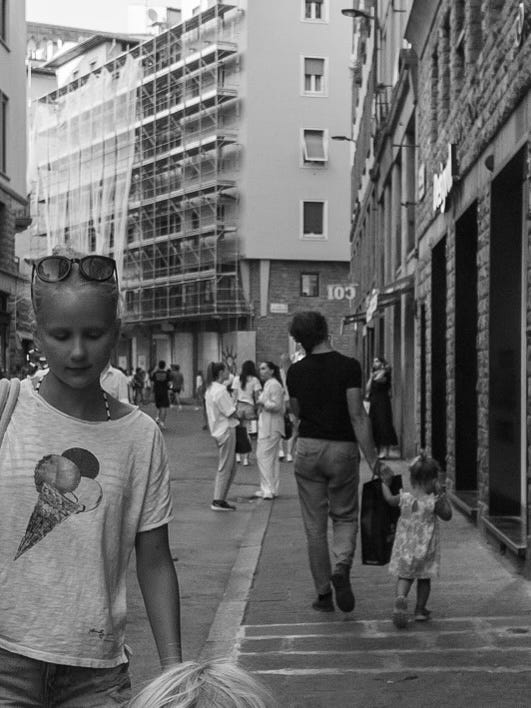What Is A Photograph?
I've often wondered what makes a photograph good. Here I explore that question.
A photograph is a story captured in light. A scene frozen in time built of characters (alive or not) composed in relation to one another. Relationships sometimes physical through space, other times inferred. A photographer composes, or in this case finds and captures pre-composed, scenes to suggest a narrative. Sometimes the suggestion is firm, such as in a marketing photo, other times its loose. The photographer uses some technical guidelines around light, geometry, and composition to establish a tone and guide the viewer through their interpretation of a scene. Much like grammar and punctuation are important to reading essays, light and composition are important to reading a photograph. Except the rules are not so much rules as they are suggestions. A good photograph may have perfect lighting, where an excellent photograph may reach for imperfect light and shadow to dramatize the story, amplifying the narrative, and establishing relationships, as the photographer intends. The dance of these illusive elements are how a photograph becomes.
The photo above does all of this. But more. And that's what makes it for me a great photograph. In the days of high tech cameras, software, and AI there is no shortage of technically "perfect" photos. Yet technically perfect photographs often don't move us. It arguably takes some level of "imperfection" to shed a tear. Some deviation from what is linear to say a thing words can't. Musicians understand the perfect fifth results in a sound with perfect equilibrium yet few would argue to avoid other intervals. Furthermore in architecture we can observe the empty space within and around a structure to be equally important in presenting the final form. Similarly a photograph is just as much about what is perfect and seen as what is not. A photo becomes where it deviates from perfection, leaving room for impression, imagination, and interpretation.
This photo is great because it balances technical perfection with imperfection. A clipped head, otherwise perfectly placed along a leading line according to the rule of thirds. We know nearly nothing about this arguably main character other than that they are likely a child somehow related to the person on their left. The head can be anyone. I'm transported. Am I the character in this photo? Is this the story of my life? The areas out of focus seem to suggest so. Surely this is not what the photographer had in mind when capturing this otherwise ordinary scene. So much can be said for the journalistic relationships found in the photo. An Italian girl wearing a shirt with gelato, looking after a younger sibling. A father on the phone returning from a shopping trip with his daughter in hand. Two friends engaged in a passing conversation. A dated brick wall scaffolded to be renewed. Each of these stories captured in such a way to draw your eyes between them. A technical accomplishment. And yet all of this only sets the scene for a photograph that tells a story larger than its frame.
When I first saw this photo I was immediately transported to my past, and then future. I saw myself looking up and recognizing the world for the first time. I felt the safety of my Fathers presence. I loved my Mother for taking my sisters and me to get Carvels ice cream on hot summer days. I then wondered about the hand that will feel safer being held in mine. How will I change over time. What parts of the story will be forgotten as they fade into the past. I shed a tear over this photo because it is indeed ordinary. It tells the story of just another day. In fact not even a day, but a moment in a day. A moment most likely to be forgotten by all but those who see this photograph. Through its technical presentation a story of life is told that is extraordinary, and timeless. The story of being a child, sibling, friend, parent, passerby, and dirt in a brick wall.


